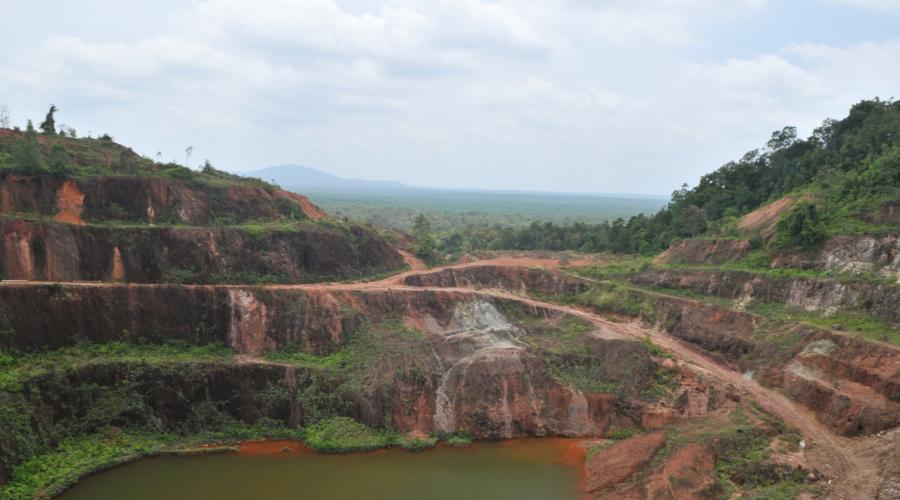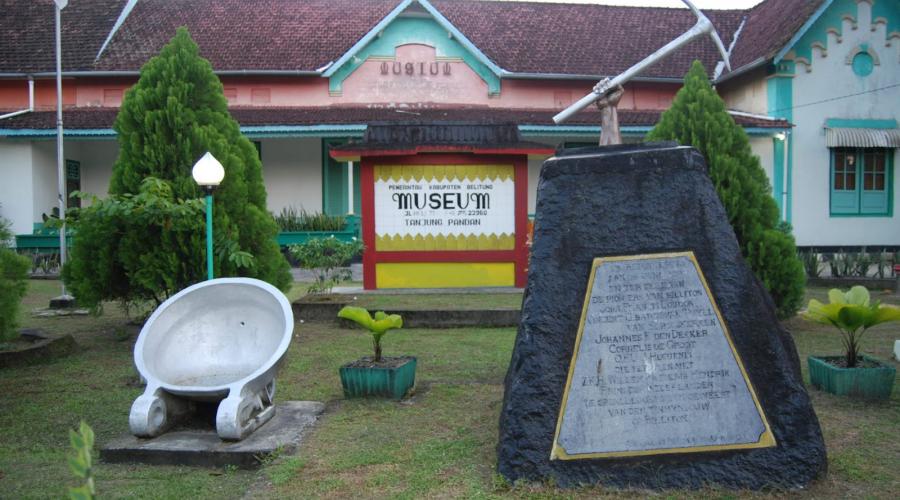
Talking about the history of Belitung, we will not forget the story of tin mining. The story of tin mining in Belitung is indeed very legendary. Even so, the story of tin mining in Belitung is depicted in the famous Laskar Pelangi novel and film. Tin has become one of the biggest crops and commodities in Belitung. Although there are no companies currently conducting large-scale tin mining activities, their history is still interesting to explore. Then what is the story of tin mining in Belitung? Here's the story.
Beginning of the Belitung Tin Mining Activity

http://www.belitungisland.com
The history of tin mining in Belitung itself has been around for a long time, namely since 1852. It all started with the discovery of tin in Belitung in 1823 by JP. De La Motte who is a Belgian Captain and served as Resident Assistant in Belitung. Initially tin mining was planned by the British, but because there was a London Treaty in 1850 the mining was transferred to the Dutch government which was then managed by a company called Billiton Maatschapij. Billiton Maatschapij itself is a private company owned by John Loudon and his colleagues by controlling and dominating the mines and tin mines in Belitung for 1 century.
The Development of Tin Mining in Belitung

http://www.belitungisland.com
Initially the management of the tin mine in Belitung was put together with Bangka. Because of the rapid development of tin mining in Belitung, in 1852, tin mining in Belitung was later separated from Bangka. This separation is mainly on administrative matters and the authority of tin mining. This separation was based on the grounds of avoiding the bad influence of the Resident of Bangka who was jealous of the rapid growth of tin mining in Belitung.
The rapid development of tin in Belitung between 1875 and 1891 made tin production in Belitung able to match Bangka. Although the size of the first mining exploration area is less than half of the second, the mining yields obtained are fairly high. From the rapid growth of tin in Belitung, Billiton Maatschapij was able to contribute 750 thousand guilders to the treasury of the Dutch East Indies.

http://www.belitungisland.com
Tin Mining Workers
In the 19th century, workers from China came to Bangka-Belitung to become tin miners. The workers who come and work in tin mining in Belitung are immediately paid after they work every day according to the results they get. Then at the beginning of each year the Belitung tin workers have the right to choose "hitchhiking" or work units that they consider good. And specifically for workers from China, then after working three years and not having debts, they have the right to apply for a return to China at the company's expense. Another facility received by mining workers in Belitung is the existence of a special hospital for these workers. Judging from the various facilities of workers in Belitung, it is found that conditions are better than those of workers in Bangka.

http://www.belitungisland.com
The Economy Slumped Because of Tin Price Factor
The growing tin mining situation in Belitung is indeed not sustainable. Because after World War I, world tin prices dropped dramatically. From here, the Netherlands together with other tin producing countries through the Bandung Agreement (1921-1924) decided to limit tin production. As a result of the drop in world tin prices, the economy of Belitung has fallen. The impact of the declining economy has made many Chinese workers decide to return home. There are at least more than five thousand Chinese miners in 1930 asking to return to their country. The only survivors of them are peranakans. They survived in Belitung to plant sahang, a plant that has proven quite successful in Bangka-Belitung.

http://www.belitungisland.com
The situation is getting worse because of the arrival of Japan
Although in the late 1930s world tin prices rose again, this situation did not last long. This is because World War II occurred which caused tin production to experience obstacles. World War II made Japan successfully occupy Belitung. The entry of Japan to replace the Dutch made things even worse for tin mining, especially for coolies. Besides there is no more subsidized rice, health care is getting worse. As a result of no more work to be done, the tin miners then went to the interior and planted cassava to meet their daily needs. Some other workers were even employed by the Japanese government in oil mines as well as for the construction of an airport near Tanjung Pandan which claimed many lives.

Billiton Maatschapij is back
When Japan then had to reclaim its defeat from the allied forces, the Dutch returned to Indonesia. Precisely on October 18, 1945, Billiton Maatschapij came back to Tanjung Pandan. But at that time the airline had changed its name to NV Gemeenschappelijke Mijnbouwmaatschappij Billiton or GMB. Although they had to fight and defeat the People's Security Army (TKR) and pro-republican forces who had come from Bangka, the Dutch finally returned to Belitung. To restore economic conditions, the Netherlands then re-encouraged tin production and formed a kind of autonomous government to stem the influence of the Republic of Indonesia with the support of the airline.
Chinese Tin Workers Begin Reacting
The return of Billiton Maatschapij or GMB turned out to make the workers or tin miners from China react. They no longer want to easily join the will or orders of the company owner. In fact, not infrequently they then protest and strike action. One of the strikes carried out by Chinese workers was April 29, 1946, where they demanded an increase in wages, a reduction in working hours and also a May 1 holiday. In addition to welfare, there are other reasons why workers added tin from China often protest when the return of Billiton Maatschapij or GMB to Belitung. It is a sense of pride for the rise of China and also the experience of the Japanese occupation that made the tin miners from China react quickly, especially when the Dutch implemented policies that were contrary to their interests.
Takeover of the Company by the Indonesian Government
In 1949, most of the shares of GMB were taken by the Indonesian government. Some of GMB shares are held by Billiton Mij in the Netherlands. And in 1958, GMB company assets were taken over by Indonesia and replaced with the name of PN Tambang Timah Belitung. After that in the following years, the government merged the Timah Belitung District Court with the Bangka Timah Mine District (formerly Bangka Tin Bedrijft) and also the Singkep Timah Mine District Court (formerly Singkep Tin Exploitatie Maatschappij) to the Timah Mine District. And PN Timah PN is the forerunner of a popular company that we know by the name of PT Timah.
From the nationalization of companies run by the Indonesian government, it made other changes besides the company's name. This change was seen in the workforce which was then taken only by Indonesian citizens and some foreign workers, but not from the Chinese.






Comments